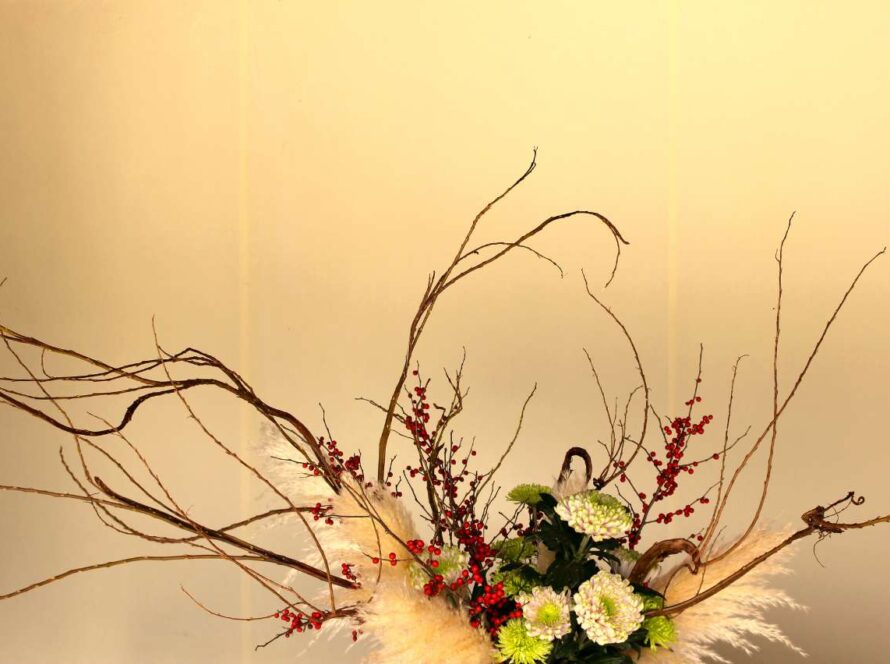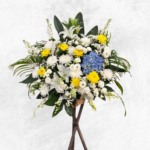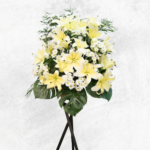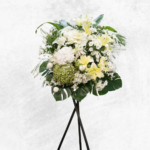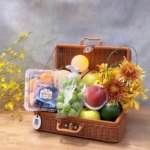Planning your wedding is an exciting time, and the right floral arrangements can truly elevate the celebration’s beauty and ambiance. From classic bouquets to whimsical centerpieces, wedding floral arrangements play a crucial role in creating a visually stunning and memorable event. This guide dives deep into the world of wedding florals, offering practical advice and inspiration to help you design the perfect floral experience for your special day.
Choosing the Right Flowers for Your Wedding
The heart of any wedding floral arrangement lies in the selection of the right flowers. It’s not just about choosing your favorites; it’s about finding blooms that complement your wedding theme, season, and venue. To make the best choices, consider the following:
Seasonality and Availability
- Seasonal blooms are often more affordable and readily available, guaranteeing a wider selection and fresher look.
- Out-of-season flowers may require special ordering and may be more expensive, but they can add a unique touch if you have your heart set on a particular variety.
Style and Theme
Your wedding style should guide your flower selection. Are you aiming for a classic, romantic, modern, or rustic look?
For example:
- Classic weddings often feature traditional flowers like roses, lilies, and hydrangeas.
- Romantic weddings may embrace delicate blooms like peonies, gardenias, and anemones.
- Modern weddings often incorporate unique and unusual flowers like succulents, proteas, and orchids.
- Rustic weddings may highlight wildflowers, branches, and natural elements.
Working with Florists for Your Wedding
Once you have a vision for your wedding floral arrangements, it’s time to find a florist who can bring your ideas to life. Working with a florist is a collaborative process, and it’s essential to find someone you trust and who understands your style. Here are some tips for making the most of your florist relationship:
- Get Recommendations: Ask friends, family, or other wedding vendors for recommendations. You can also check online reviews and wedding vendor directories.
- Meet with Multiple Florists: Schedule consultations with several florists to compare their styles, pricing, and communication styles.
- Share Your Vision: Bring photos of floral arrangements you like, color palettes, and any specific flower requests. The more information you provide, the better the florist can understand your vision.
- Ask for a Detailed Proposal: A good florist will provide a comprehensive proposal outlining the specific flowers, arrangements, and pricing. Make sure you understand all the details and ask any questions you have before signing a contract.
- Discuss Logistics: Coordinate delivery times, set-up procedures, and any special requirements for your floral arrangements. Discuss payment terms and any potential changes to the arrangements.
Remember, communication is key. Keep an open line of communication with your florist throughout the planning process, and don’t hesitate to ask questions or share your concerns.
Incorporating Floral Themes Throughout Your Wedding
While your bridal bouquet and centerpieces are the focal points, don’t forget the potential of incorporating floral themes throughout your wedding. These subtle touches can truly elevate the overall ambiance and create a cohesive aesthetic.
Think Beyond the Basics
Here are some ideas to consider:
- Ceremony Arches & Backdrops: A stunning floral arch or backdrop can frame the ceremony space and add a touch of romance. Consider incorporating flowers that complement your color palette or the overall theme.
- Guest Tables: Go beyond standard centerpieces. Floral runners, small bouquets, or even individual flower arrangements on place cards can add a touch of elegance.
- Reception Décor: Floral accents can be integrated into many areas:
- Lighting: Wrap flower garlands around chandeliers or lanterns for a warm and inviting glow.
- Signage: Floral wreaths or bouquets can adorn welcome signs or seating charts.
- Favors: Mini floral arrangements or single blooms make lovely and fragrant favors for guests.
Remember, the key is to choose floral accents that complement your wedding’s overall style and color scheme. By thoughtfully integrating floral elements throughout your venue, you can create a truly captivating and unforgettable celebration.
| Area | Floral Ideas |
|---|---|
| Ceremony |
|
| Guest Tables |
|
| Reception Décor |
|
Maximizing Your Wedding Floral Budget
While wedding flowers are a beautiful and essential part of the celebration, they can also be a significant expense. However, with smart planning and a few creative ideas, you can maximize your wedding floral budget without sacrificing style or beauty.
Here are some practical tips to help you make the most of your floral investment:
- Prioritize your floral needs: Consider where your floral budget is most important. Do you dream of a breathtaking bouquet and centerpieces or perhaps a grand entrance with floral arches? Allocate your budget to the areas that matter most to you.
- Choose in-season flowers: In-season blooms are typically more affordable and readily available. Work with your florist to incorporate flowers that are in their prime during your wedding month for a stunning and budget-friendly option.
- Embrace simple elegance: Less can often be more. Opt for elegant and simple arrangements with fewer varieties of flowers. Consider incorporating greenery and natural elements like branches and foliage for a less expensive but equally captivating look.
- Explore alternative floral options: Consider using non-traditional floral alternatives such as silk or dried flowers. These options offer a unique and budget-friendly approach without compromising on beauty or elegance.
- Don’t be afraid to DIY: Consider creating some of your own floral arrangements for smaller details like table centerpieces or guest favors. This allows you to personalize your decor and save on costs. Just be sure to start early and plan accordingly.
- Talk to your florist: Communicate your budget and vision openly with your florist. They can offer valuable advice on finding the perfect balance between your desired aesthetic and your financial constraints. Don’t be afraid to ask for alternatives or negotiate on pricing.
Wedding Floral Arrangements Conclusion
Planning your wedding floral arrangements is an exciting and creative process. From choosing the right flowers to working with a talented florist, the journey involves careful consideration and personalized touches. Remember, wedding floral arrangements are a key element in creating a visually stunning and memorable celebration. By following the advice and inspiration in this guide, you can craft the perfect floral experience that reflects your style, budget, and dreams for your special day.
Whether you opt for classic elegance or modern whimsy, let your floral choices enhance your wedding’s ambiance and create a truly unforgettable celebration. From the moment guests arrive to the final dance, let the beauty of your wedding floral arrangements set the stage for a magical and lasting memory.
Wedding Floral Arrangements Quick FAQ
What are the most popular wedding flowers?
While preferences vary, some of the most popular wedding flowers include roses, lilies, hydrangeas, peonies, tulips, orchids, and ranunculus. These blooms offer a wide range of colors, shapes, and scents, making them versatile choices for various wedding styles.
How far in advance should I book a florist for my wedding?
It’s recommended to book a florist at least 6-12 months in advance, especially if you have a specific vision for your floral arrangements or if you are planning a wedding during peak season. This allows ample time for consultations, planning, and securing the desired flowers.
Can I use artificial flowers for my wedding?
While real flowers are traditionally preferred, using artificial flowers is a viable option for those seeking budget-friendly alternatives or who prefer a more durable and long-lasting solution. Some artificial flowers are remarkably realistic and can add a touch of elegance and color to your wedding décor.


指南》-890x664.png)
